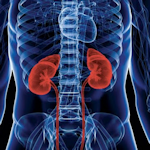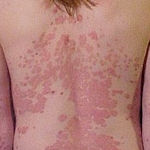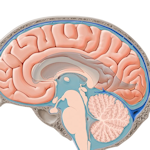
Dr. Maxwell Nartey
Professor of Symptometric Science, American School of Symptometry, NFP
Why are so many individuals diagnosed with kidney disease, chronic kidney disease, or renal failure? Why are so many individuals on dialysis? Why is the waiting list for kidney transplant so long that some patients end up dying before it is their turn for the transplant? All these questions will be answered in this article.
The reason people have kidney disease is, they know little about the hepatocentric concept. As a matter of fact, they have never heard of the hepatocentric concept because I coined this term.
Per the hepatocentric concept, the liver is central to our health. All the organs, systems, structures, and mechanisms revolve around the liver like all the planets revolve around the sun. In other words, all our organs, systems and mechanisms depend on our liver for their raw materials. Why?
The answer is, we are made of protein (human collagen), and amino acids are the building blocks of protein. It is the liver that produces enzymes to convert all the essential, and semi-essential amino acids to non-essential amino acids so that the cells in our organs, bones, teeth, and glands can use them to produce proteins.
Proteins refer to hormones, neurotransmitters, enzymes, red blood cells, white blood cells, platelets, muscle proteins, dentine, desmosomes, keratin, etc.
Therefore, if amino acid conversion cannot be done in the liver because certain enzymes cannot be produced, the glands, the organs, the mechanisms, and the structures like the bones and the teeth will starve. If they starve, a disease will occur. Let me focus on the kidneys.
The liver is the biggest guzzler of the semi-essential amino acid called arginine. It is because our liver does not produce arginine that we must get it from food. The foods that have arginine are:
- Nuts
- Dairies
- Eggs and
- Meats
Arginine always goes with lysine, and the arginine/lysine ratio must be 2:1. Unfortunately, many individuals cannot maintain this 2:1 ratio because of their diet, their culture or their religion.
It is because they cannot maintain the 2:1 ratio that they end up reversing the ratio making it 1:2 instead of 2:1. In other words, consuming more lysine will deplete arginine, thereby causing a 1:2 imbalance. The food sources of lysine are:
- Legumes (beans including string beans, lentils, and peas)
- Poultry (chicken, turkey, ostrich, etc.)
- Fish
- Meats
- Dairies (ice cream, cheese, butter, yogurt, kefir and milk)
- Fruits and
- Vegetables
Vegetarians, vegans, fruitarians, regular fish eaters, egg consumers, and nut eaters will end up having more lysine than arginine, thereby causing an arginine/lysine imbalance. The focus on protein is wrong. We should rather focus on specific amino acids.
The kidney will be the first organ to suffer from consequences of the arginine/lysine imbalance. Why? The answer is, the kidneys get all their filtration force, power, pressure, and strength from phosphocreatine, and without the liver’s conversion of arginine, the kidneys will not have phosphocreatine.
To produce phosphocreatine for the kidneys, the liver must first produce the enzyme called creatine kinase. It is creatine kinase that will speed up the combination of glycine with oxygen and ornithine to produce phosphocreatine. This is why the kidneys and the liver should never be studied separately.
Unfortunately, allopathic medicine separated the kidneys from the liver and it created a specialty for each. The truth is, the kidneys and the liver are interconnected, interrelated, integrated and interdependent. The liver helps the kidneys, and the kidneys also help the liver through the red bone marrow.
The larger the amount of phosphocreatine the liver produces for the kidneys, the stronger would be the kidneys’ filtration force and power. The stronger the kidneys’ filtration force 1) the smaller would be the amount of creatinine in the person’s urine and 2) the higher would be the person’s GFR (glomerular filtration rate).
For example, a creatinine reading of 67-117 unmol/L or 0.7 – 1.25 mg/dl; and a GFR of 60 mL/min/1.73m2 or 90, show that the person’s kidneys are superbly healthy, and their filtration force, power, strength and pressure is incredibly terrific. Obviously, these kidneys are benefitting immensely from a lot of phosphocreatine.
Why is it impossible to see these amazing numbers in the laboratory reports of vegetarians, vegans, nut eaters, legume eaters, dairy consumers and egg consumers? The answer is simple. They consume more lysine than arginine. Then, they consume arginine eliminators on a daily basis.
For example, the prussic acid in nuts eliminates arginine; the sparteine combined with phosphorus in all legumes eliminates arginine; the phosphoprotein in dairies and in eggs eliminates arginine. Then, the lysine in a person who eats fish regularly, eliminates arginine. It is the constant elimination of arginine that explains the arginine deficiency that endangers both the liver and the kidneys.
If people have deplorable numbers in their laboratory reports, it is not by accident. They are just eating the wrong foods. As a result, they have more lysine than arginine.
Would taking arginine supplements solve their problem? No. A liver that is malnourished and jammed, and is deprived of oxygen, cannot produce creatine kinase. Going on dialysis will not solve their problem either. This is the scientific truth that the world never had. Thanks to Symptometry, the information on the arginine/lysine ratio is now available; and it puts to rest the ambiguity surrounding kidney disease or renal failure.
What can a person do to avoid dialysis, or if they are already on dialysis, what can they do to improve their numbers, and their health? Also, what can they do to extend their life expectancy?
To physicians, dialysis will be unavoidable if the person’s numbers keep getting worse; and also, if they are already on dialysis, they will not get better. Symptometry has a totally different take on this.
To Symptometry, the answer to both questions is, know the scientific facts about the liver. Do not focus on the kidneys. Instead, focus on the liver, master the arginine/lysine ratio, change your diet to maintain the arginine/lysine ratio, ionize, hydrolyze and oxidize your liver, and nourish it scientifically by making sure that you avoid the arginine eliminators.
After making these changes, you will end up producing creatinine kinase and phosphocreatine. As a result, you will never have a kidney disease, much less renal failure. If you are on dialysis, expect better numbers, and you will be healthier.
This information is equally important to those who underwent kidney transplant or have herpes. To physicians, herpes is incurable. This is patently false.
The more lysine a person has, the higher would be the number of herpetic outbreaks.
Unfortunately, people have been misled into taking lysine supplements to treat herpes. This is the most flagrant misinformation I have ever heard. Herpes in lysine takers will never be cured. Probably, this is what might have led physicians to conclude that herpes is incurable.
Those who do not eat meat because they are vegetarians or vegans, or because they are adhering to their culture or religion, must now decide what their next move should be.
Meat is not the problem, and it has never been the problem. It is the way meat is cooked, and the enzymes the meat eaters have not been producing that is the twin problem.
A meat eater should produce four enzymes to digest meat. These four enzymes are pepsin, trypsin, chymotrypsin and carboxypeptidase.
Then, they must cook meat scientifically so that all the hormones, antibiotics, and animal diseases are destroyed, and all the amino acids are available for consumption.
People have been confused, misled, misinformed, disinformed, and even miseducated for so long that they do not know what to believe anymore. Well, this is why their kidneys are collapsing.
Now, the scientific facts about the arginine/lysine ratio are here thanks to Symptometry; and these facts are verifiable. Unfortunately, a person who studied pharmacology, anatomy and physiology will not be privy to the information on the arginine/lysine ratio.
© Copyright 2021, The American School of Symptometry, NFP. No part of this publication may be reproduced or transmitted in any form or by any means, electronic or mechanical, including photocopying, recording, or by any information storage and retrieval system without the written permission of The American School of Symptometry, NFP. Library of Congress copyright number Txu 1-621-370, Washington D.C.


 Previous Post
Previous Post Next Post
Next Post